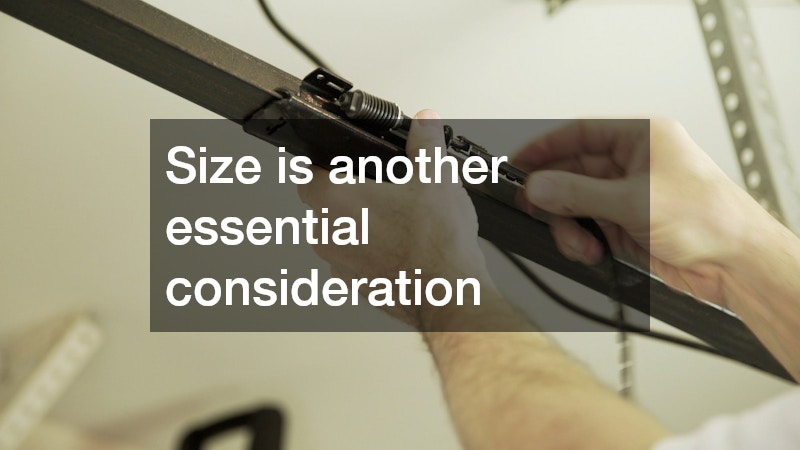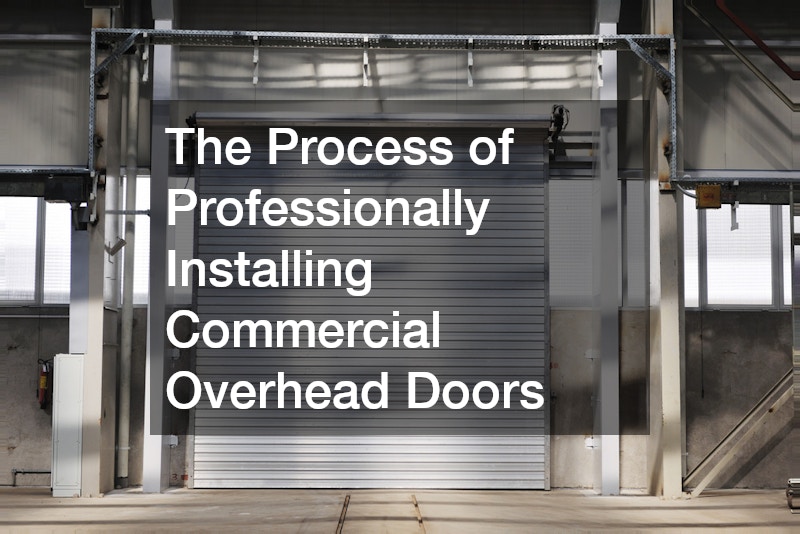Explore the intricate process involved in the professional installation of commercial overhead doors. Learn the answers to common questions, potential challenges, and best practices to ensure a seamless installation experience.
Choosing Your Door Type
The commercial overhead door market offers a variety of options designed to meet different needs and preferences. Sectional doors, characterized by their horizontal panels that move vertically, provide insulation and aesthetic appeal.
Meanwhile, rolling steel doors are favored for their security and durability, making them ideal for warehouses and loading docks.
Fire-rated doors serve a specific purpose to prevent the spread of flames and smoke, crucial in safety-regulated environments such as hospitals or high-rise buildings. Understanding your unique requirements is paramount when selecting a door type for commercial use. Installation techniques may vary depending on the door type selected.
Each overhead door type comes with its specific components and hardware, necessitating different installation processes and tools. Being informed about these variations will help streamline the installation process and ensure that the chosen door operates effectively and safely.
Selecting a Compatible Door
When selecting the ideal overhead door for a commercial setting, several critical factors must be taken into account. The material of the door plays a significant role in determining durability, insulation, and maintenance requirements. Steel doors are sturdier but may require additional insulation for energy efficiency, while aluminum doors can be lighter and more visually appealing.
Size is another essential consideration, as the dimensions of the door must align not only with the opening but also with the operational needs of the business. Assessing the available space and functionality will help in selecting an appropriately sized door. Design preferences should also be factored in to ensure the door complements the overall aesthetics of the business facade.
Lastly, it is vital to consider any insulation needs based on the climate and temperature control requirements within the facility. A well-insulated door will improve energy efficiency and comfort, contributing to lower utility bills over time. Thus, choosing the right commercial overhead door involves a balance of functionality, aesthetics, and budget-minded decisions.
Installing the Door
The installation process of commercial overhead doors begins with a thorough site assessment to identify specific requirements and challenges. Proper measurements and evaluations of the existing structure are necessary to ensure that the new door will fit correctly and function as intended. This step sets the stage for successful installation.
After planning, the next phase involves preparing the site and gathering necessary tools and materials. This includes ensuring that the area is clear and that any electrical connections for automatic doors are properly set up. It is crucial to follow safety guidelines within this preparation process to mitigate any potential hazards.
Once the preparation is complete, the door assembly and installation can begin. This step includes mounting tracks, securing the door panels, and making any necessary adjustments to ensure smooth operation. Positive adjustments at the end of the installation phase are essential to guarantee safety and functionality in real-world conditions.
Understanding Challenges
Installing commercial overhead doors is not without its challenges. Uneven surfaces can pose difficulties, leading to complications in the alignment and functioning of the door. This scenario often entails additional work to rectify the base conditions before installation can proceed smoothly.
Another common obstacle is the electrical setup required for automatic doors. Proper wiring and connections are essential for the safe operation of automated systems, and any oversight during installation can lead to malfunctions or safety hazards. It is crucial for installers to be well-versed in electrical safety to avoid potential issues.
Weather conditions can also significantly affect the timeline and quality of the installation process. Rain, snow, extreme temperatures, or wind can cause delays or impact the performance of materials being used. Understanding these external factors is vital for planning the installation day efficiently to minimize unforeseen interruptions.
Maintaining Doors After Installation
Once the overhead door is installed, proper maintenance becomes critical to ensure longevity and reliable performance. Regular inspections should be conducted to identify wear and tear on components such as springs, cables, and hinges. These proactive measures can prevent more significant problems from developing down the line.
Lubrication of moving parts is another essential aspect of maintenance. Using appropriate lubricants will help minimize friction and wear, improving the operational efficiency of the door. Establishing a routine maintenance schedule will support ongoing functionality and prolong the lifespan of the overhead door.
It may be beneficial to consult with a professional for annual maintenance checks. Expert technicians can provide valuable insights on potential issues, ensuring that the door adheres to safety regulations while operating optimally. Investment in maintenance will ultimately result in enhanced durability and reduced repair costs over time.
Understanding the process of professionally installing commercial overhead doors is vital for business owners. By following the outlined guidelines and addressing common concerns, you can ensure a smooth installation process and maintain the efficiency of your overhead doors for years to come.

